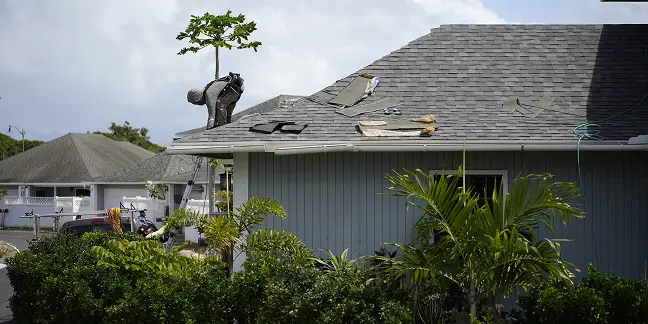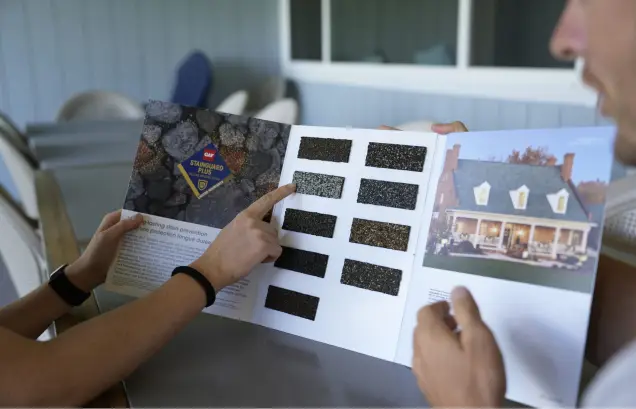Hurricane season in North Carolina kicks off in June and can last all the way through November. That’s months of potentially strong winds, heavy rain, and the risk of serious damage to your home. While you can’t control the weather, you can take steps to protect your property—starting with your roof. The right hurricane roof preparation can mean the difference between minor fixes and costly, extensive repairs.
Not sure where to start when it comes to preparing your roof for hurricanes? No worries—we are breaking it down step by step so you can get your roof hurricane-ready before the next big storm rolls in.
Why Preparing Your Roof for Hurricanes is So Important
Your roof is your home’s first line of defense during a hurricane. It takes the brunt of the wind, rain, and flying debris, so if it’s already in rough shape, a storm can turn minor issues into major problems. Loose shingles can fly off, flashing can tear away, and water can seep into weak spots, leading to leaks, structural damage, or even total roof failure.
The good news? Taking the time to check and strengthen your roof before hurricane season gets serious can save you from expensive repairs and unnecessary stress. Here’s where to begin:
Step 1: Get a Professional Roof Inspection
One of the smartest things you can do before hurricane season is to schedule a professional roof inspection. A roofing expert will spot potential problem areas, including:
- Loose or missing shingles
- Worn-out or damaged flashing
- Weak or deteriorated sealants
- Structural weaknesses in the roof decking
Catching these issues early means you can fix them before a storm turns them into a costly headache.
Step 2: Secure Loose Shingles and Roofing Materials
Loose or damaged shingles are like an open invitation for hurricane winds to damage your home. If an inspection shows any compromised shingles, don’t wait—get them repaired or replaced right away. Reinforcing your shingles with hurricane-rated roofing nails and adhesives can also help them withstand high winds.
If your roof is getting up there in age and the shingles are curling or lifting, it might be time for a complete roof replacement with impact-resistant materials built to handle severe storms.
Step 3: Reinforce Roof Flashing and Sealants
Flashing—the metal strips around chimneys, vents, and skylights—helps keep water out of your home. But if it’s loose or corroded, it can fail when heavy rains hit. To make sure your roof stays watertight, check the flashing for gaps and weak spots. Adding fresh sealant to these areas can make a big difference in preventing leaks during a storm.
Step 4: Trim Trees and Clear Out Debris
Overhanging branches are a major hazard during hurricanes. Strong winds can snap limbs, sending them straight onto your roof. To reduce the risk of damage from tree branches:
- Trim back any tree limbs that hang over or near your roof.
- Remove dead or weak trees that could come down in a storm.
- Clear leaves, twigs, and other debris from your gutters and roof to prevent blockages and water buildup.
Step 5: Clean and Secure Your Gutters
Your gutters play a huge role in directing water away from your roof and home. If they are clogged or loose, they won’t do their job properly, which can lead to roof leaks and even foundation water damage. Before hurricane season, make sure your gutters and downspouts are:
- Free of debris and blockages
- Securely attached to your home
- Channeling water away from your foundation
Installing gutter guards can also help prevent clogs and make maintenance easier throughout the season.
Step 6: Consider Installing Hurricane Straps or Clips
Hurricane straps or clips are metal fasteners that reinforce the connection between your roof and the rest of your home. These add-ons help prevent high winds from lifting your roof off of your home. If you are building a new home or replacing your current roof, installing these reinforcements is a smart investment for long-term protection.
Step 7: Have a Plan for Emergency Repairs
Even with the best hurricane roof preparation, severe storms can still cause damage. Having an emergency plan in place can help you act quickly to minimize further problems. Your plan should include:
- A trusted roofing contractor you can call for immediate repairs
- A supply of tarps and waterproof materials to cover damaged areas temporarily
- An understanding of what your homeowner’s insurance covers for hurricane damage
Work with a Pro to Get Your Roof Hurricane-Ready
Preparing your roof for hurricane season isn’t just about reacting when a storm is on the way—it’s about making sure your home is protected before disaster strikes. At Attyx, we specialize in helping North Carolina homeowners reinforce their roofs and keep them in top shape year-round. Whether you need an inspection, repairs, or a full roof upgrade, we’ve got you covered.
Don’t wait until the last minute—schedule your roof inspection with Attyx today and take the first step toward a safer, stronger home this hurricane season.




